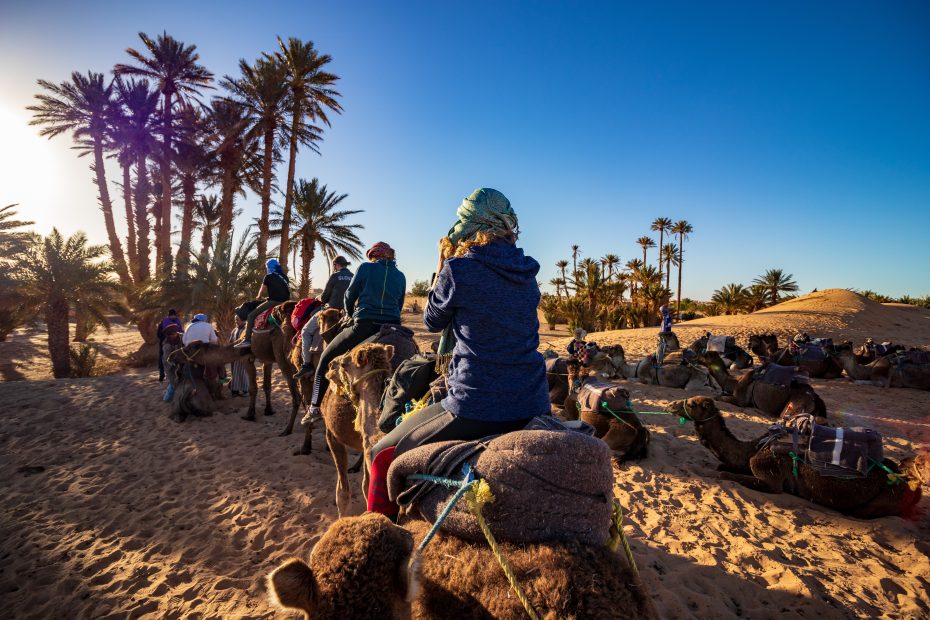Table of Contents
Introduction
The vast Sahara desert spans much of North Africa, filled with awe-inspiring landscapes and natural wonders. In the Islamic Republic of Mauritania, the sandy seas of the Sahara offer unique adventures and breathtaking sites. With its towering dunes, picturesque oases, diverse wildlife, and remnants of ancient cultures, the Mauritanian Sahara is a majestic place. Join us as we explore the beauty of encountering this iconic desert.
The Sahara is the largest hot desert in the world, covering huge swaths of several African countries. Mauritania sits in the western region of the Sahara, where the landscape is dominated by vast seas of sand dunes. These golden waves of sand seem to go on forever, changing shape and color with the light. Camel caravans crisscross the desert sands, conjuring images of the ancient caravans that traversed the region for trade and transport. Even today, the nomadic Moorish tribes retain their traditional lifestyle of herding goats and camels across the sands. With its distinctive landscapes and cultures, the Mauritanian Sahara offers adventures unlike anywhere else in the world.
Geography and Landscape
Mauritania may be mostly covered by the Sahara, but the desert landscapes here are far from monotonous. While the endless sand dunes may be the most iconic feature, the Mauritanian Sahara also contains oasis valleys, dry lakes, rocky plateaus, and serrated mountains. Dramatic shifts between daytime heat and nighttime chill add to the diversity. Temperatures routinely soar past 100°F during the day but plummet after sunset. The lack of cloud cover in the desert means stargazing is phenomenal at night.
The Mauritanian Sahara harbors a surprising diversity of plant and animal life. Hardy grasses and thorny bushes dot the dunes, while date palms cluster around desert oases. Gazelles, fennec foxes, hyenas, and jackals roam the sands. Venomous vipers and gigantic monitor lizards hide in shaded areas while desert crocodiles lurk near gueltas, or natural rainwater pools. Birds of prey soar overhead, searching for lizards and rodents. Even in this harsh climate, the desert teems with life.
Adventuring Through the Desert
Exploring the Mauritanian Sahara by camel allows you to immerse yourself in the endless sands. Plodding along atop a camel train evokes the bygone era of trans-Saharan caravans. The rolling motion as you ride the peaks and troughs of dunes gives you a unique vantage point to admire the rippling sands. As the setting sun dims the landscape, make camp under a canopy of stars. The Milky Way dazzles brightly in the crisp night air. Rise before dawn to watch the sun peek above the horizon, revealing the desert awash in golden light.
Days spent exploring the Mauritanian Sahara reveal breathtaking landscapes. Seek out gueltas shaded by palm trees, then hike to a viewpoint atop a high dune to admire the patterns of dunes spreading to the horizon. Visit prehistoric rock art sites and the ruins of ancient cities that once thrived as desert oases. Experience Saharan culture by staying in nomadic tents and sipping sweet Mauritanian mint tea. The simple act of watching dawn break over the dunes can be profoundly moving.
Key Sites and Attractions
Several iconic sites and natural formations make Mauritania a top Saharan destination. The Richat Structure is an enormous geologic dome 50km wide that is strikingly visible from space. Chinguetti is a historic trade city founded over 700 years ago. Roam the crumbling Saharan architecture and browse texts at the Chinguetti manuscript library. East of Chinguetti, Ouadane is another medieval Mauritanian town carved from the desert sands.
Terjit Oasis harbors a palm grove fed by a natural spring, offering respite from the desert heat. Climb the Ouadane Sand Sea’s shifting dunes, culminating in the towering Ben Amera dune at 300m high. Near the Mali border, the breathtaking Amojjar Pass cuts a narrow gorge through rugged rock formations. Each unique site adds to the majestic mosaic of the Mauritanian Sahara.
Preserving the Majestic Sahara
The Sahara desert is at risk from climate change and increasing human activity, so sustainable travel practices are crucial. Pristine sections of the Mauritanian Sahara are preserved in national parks and nature reserves. Visiting these conserved lands supports their protection while providing income to local communities. Following eco-tourism principles promotes responsible use of the fragile desert environment.
As a desert society, Mauritanians have adapted to their environment for centuries and can serve as model stewards of the land. Traditional Moorish nomads harmoniously coexist with the harsh Saharan climate. By supporting sustainable industries like camel herding and dates farming, travelers can help maintain indigenous livelihoods. With mindful tourism, the evocative Mauritanian Sahara can retain its majesty for generations to come.
Conclusion
The Sahara is a land of wonder, and Mauritania contains some of its most compelling landscapes. Towering dunes, picturesque oases, and ancient caravan towns create an enchanting desert mosaic. Traveling respectfully through the Mauritanian Sahara reveals breathtaking beauty and unforgettable adventures. As long as its fragile splendor is protected, the majestic Mauritanian Sahara will continue inspiring awe in all who encounter its might and magic.
FAQs
What is the best way to see the Mauritanian Sahara?
Camel treks, 4WD safaris, and camping excursions allow you to immerse yourself in the desert landscapes. Hiking and visiting oases and historic towns also showcase the region’s diversity.
When is the best time to visit the Mauritanian Sahara?
The cooler months from November to February see pleasant daytime temperatures under 86°F. March to June bring very hot and dry conditions.
What wildlife lives in the Mauritanian Sahara?
Dorcas gazelles, fennec foxes, caracals, hyenas, jackals, Monitor lizards, spiny-tailed lizards, desert crocodiles, and many bird species inhabit the sands.
How can I travel sustainably in the Mauritanian Sahara?
Stick to established trails, camp at designated sites, avoid waste, and refrain from removing natural artifacts like rocks or fossils. Support eco-tourism ventures.
What safety precautions should I take in the desert?
Travel with a guide, stay hydrated, protect against the sun, dress for extreme temperature shifts, and avoid sandstorms.
